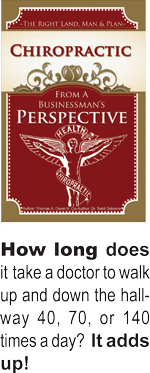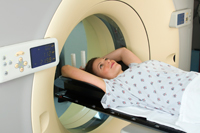Well, the dust has settled and the reports have been published, The Chiropractic Demonstration Project is finally over. So, how did we do? Well, we won and we lost.
The key points of the demonstration project were:
• “Section 651 of Medicare Prescription Drug, Improvement, and Modernization Act of 2003 (MMA)
• Centers for Medicare & Medicaid Services (CMS) to conduct demonstration evaluating feasibility and advisability of expanding coverage for scope of services that chiropractors are permitted to provide
• Four sites: 2 urban, 2 rural; one of each must constitute a Health Professional Shortage Area (HPSA)
• Demonstration will operate for two years and must be budget neutral” i
 The entire profession expected to do well under these conditions. We expected to demonstrate savings to the Medicare program by offsetting the increase in chiropractic payments with decreases in hospitalizations and surgeries.
The entire profession expected to do well under these conditions. We expected to demonstrate savings to the Medicare program by offsetting the increase in chiropractic payments with decreases in hospitalizations and surgeries.
When the final report came out, we found that we were over budget by a substantial margin. Depending upon which calculation you use, we were either $50 million over budget or $114 million over budget. That requires some explanation. The results of the demonstration project were calculated in two ways: 1) chiropractic only patients and 2) all Neuromuscularskeletal (NMS) diagnoses patients. There were flaws in both methods.
“The All NMS User and Chiropractic User each has strengths and limitations. The former avoids selection efforts by including all beneficiaries who were potential targets for chiropractic services under the demonstration. At the same time, its results are affected significantly by changes in the cost of care for the 86 percent of individuals who did not receive any chiropractic services. The Chiropractic User analysis, on the other hand, directly reflects the impact of expanded coverage for chiropractic services but may miss unintended effects of the demonstration on services provided by other types of health care professionals.” ii
In other words the Chiropractic User analysis would show an increase because Medicare is paying for more services and the All NMS User analysis would show an increase because only 14 percent are under the care of a chiropractor.
The analysis also included a breakdown of the geographic areas. The demonstration project was conducted in four distinct geographic areas: the entire state of Maine, the entire state of New Mexico, 26 counties in northern Illinois, plus Scott County in Iowa, and 17 counties in central Virginia. The cost analysis by both user groups was broken down into each geographic area.
“The breakdown of All NMS User results by state indicates that Illinois counties accounted for all of both total and per-person increases in costs. Increases in costs in Illinois were offset by significant reductions in Maine, New Mexico, and Virginia. Within Illinois, Chicago and its suburbs accounted for 88% of total increase in costs.” iii
“The positive net impact of the demonstration (i.e., increase in costs) was completely due to the $240 per beneficiary effect of Chicago (t = 13.7, p<.01); while the effect of the other demonstration counties was a negative $31 (t = 2.1, p<.05).” iv
In other words, Chicago increased the per-beneficiary cost to Medicare by $240.00 while all of the other demonstration counties realized a savings to Medicare of $31.00 per beneficiary.
The beneficiaries were surveyed and “reported good relief of symptoms and high degrees of satisfaction with the chiropractic care they had received. Nearly 70 percent of the survey respondents indicated that they had insurance, in addition to Medicare, that covered chiropractor services.” v
So, overall there is good news and bad news from the Chiropractic Demonstration Report. The bad news is that we were overbudget by a significant amount and Medicare has focused on this one aspect by reducing chiropractic reimbursement by between 2% and 3% starting in 2010.
The good news is that we realized a notable savings to Medicare in 4 of the 5 geographic areas of the demonstration project. The patients reported a high degree of satisfaction with the care that they received from their chiropractors.
To highlight the good and ignore the bad would be to invoke that oft-used metaphor of rearranging the deck chairs on the Titanic. We, as a profession, need to urge those responsible to determine what happened in Chicago to cause such an uncharacteristic increase in costs.
The end result is this: You can pretty much find something in the report to support any position on chiropractic that you wish to take. We will have to watch to see what position CMS takes.
Dr. Ron Short is a certified Medical Compliance Specialist, a certified Peer Review Specialist and a certified Insurance Consultant. He consults with doctors regarding Medicare and office compliance programs as well as presenting seminars on Medicare, documentation and compliance. You can send your question or comments to Dr. Short or join his mailing list at [email protected].
References:
iChiropractic Demonstration Power Point Presentation
iiReport to Congress on the Evaluation of the Demonstration of Coverage of Chiropractic Services Under Medicare, Page 18
iiiReport to Congress on the Evaluation of the Demonstration of Coverage of Chiropractic Services Under Medicare, Page 14
ivAnalysis of the Budget Neutrality of the Demonstration of Coverage of Chiropractic Services under Medicare, Page 10
vReport to Congress on the Evaluation of the Demonstration of Coverage of Chiropractic Services Under Medicare, Page 19



 In my 25 years as a chiropractor, business consultant to chiropractors, and CEO of Chiropractic Leadership Alliance (CLA), I have seen many challenges dealt to the field of chiropractic. Through it all, my job has been to help DCs face these challenges and thrive.
In my 25 years as a chiropractor, business consultant to chiropractors, and CEO of Chiropractic Leadership Alliance (CLA), I have seen many challenges dealt to the field of chiropractic. Through it all, my job has been to help DCs face these challenges and thrive. 



 I
I I
I


 Medicare has arrayed a mighty horde of contractors and subcontractors to ensure that no overpayment is missed. Everything from the new Recovery Audit Contractors (who are paid on commission) to the newly re-named Zone Program Integrity Contractors to the reviewer at the local Medicare Administrative Contractor are there to ensure that payments are made only for medically necessary services. If the documentation does not prove that the services were medically necessary, then they weren’t and you owe Medicare some money.
Medicare has arrayed a mighty horde of contractors and subcontractors to ensure that no overpayment is missed. Everything from the new Recovery Audit Contractors (who are paid on commission) to the newly re-named Zone Program Integrity Contractors to the reviewer at the local Medicare Administrative Contractor are there to ensure that payments are made only for medically necessary services. If the documentation does not prove that the services were medically necessary, then they weren’t and you owe Medicare some money.
 The entire profession expected to do well under these conditions. We expected to demonstrate savings to the Medicare program by offsetting the increase in chiropractic payments with decreases in hospitalizations and surgeries.
The entire profession expected to do well under these conditions. We expected to demonstrate savings to the Medicare program by offsetting the increase in chiropractic payments with decreases in hospitalizations and surgeries.